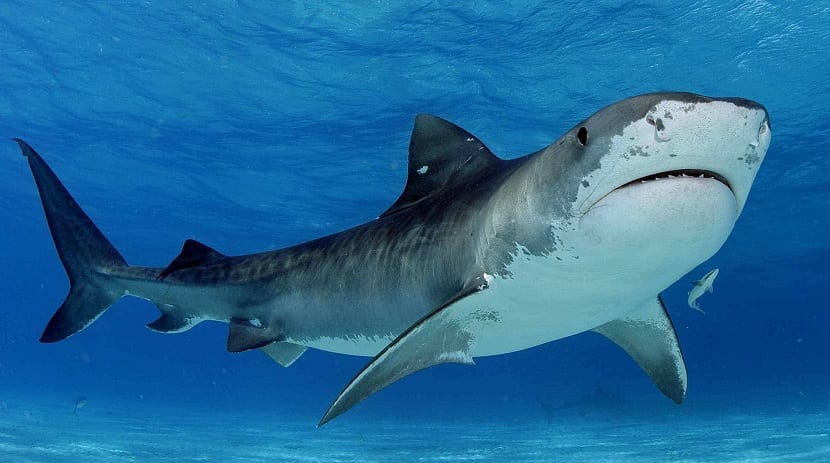
In previous articles we talked about White shark as one of the fiercest predators on the seas. Today we come to tell you another about sharks. In this case we are going to talk about bull shark. Although in principle this name does not sound very common, it is one of the most common sharks that inhabit the coasts and oceans of Latin America. Its scientific name is Carcharhinus leucas.
If you want to know all the characteristics, feeding, habitat and reproduction of this shark, this is your post.
Key features
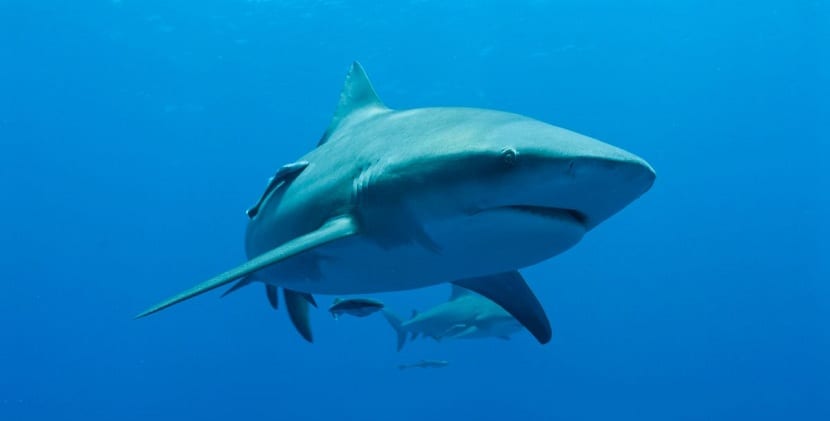
There are numerous sightings of this shark in many places. It is very easy to move around the sea and they are quite numerous. You can navigate both fresh and salty waters and both rivers and lakes in Central America and the Amazon.
Its body has two large dorsal fins and an elongated tail with a long upper lobe and a precaudal bill. You can find copies of up to about 3,2 meters long. On average the males measure 2,1 meters and the females 2,2 meters. They do not vary much in size. Its color is gray throughout the body, except for the upper part which is white.
It is a fairly aggressive marine species and is considered one of the largest shark species. Your weight oscillates between 90 and 200 kilograms. The heaviest ones are usually longer. Although people believe that the white shark is the most dangerous animal in the oceans, it is not correct. The bull shark can become more prone to attack humans.
Its body is quite robust and thick, with quite long fins. When they are young they have dark spots and red spots on the sides. As for the teeth (an important aspect in the world of sharks) we find ones of enormous size, sharp and long. The jaws are quite strong, although its eyes are quite small in relation to its entire body.
It usually shows great aggressive activity and attacking behavior. When they attack, they do so by circling their prey over and over again. They will be like this until they achieve their goal. They are quite prone to attacking humans, so extreme caution must be exercised with them.
Distribution and habitat
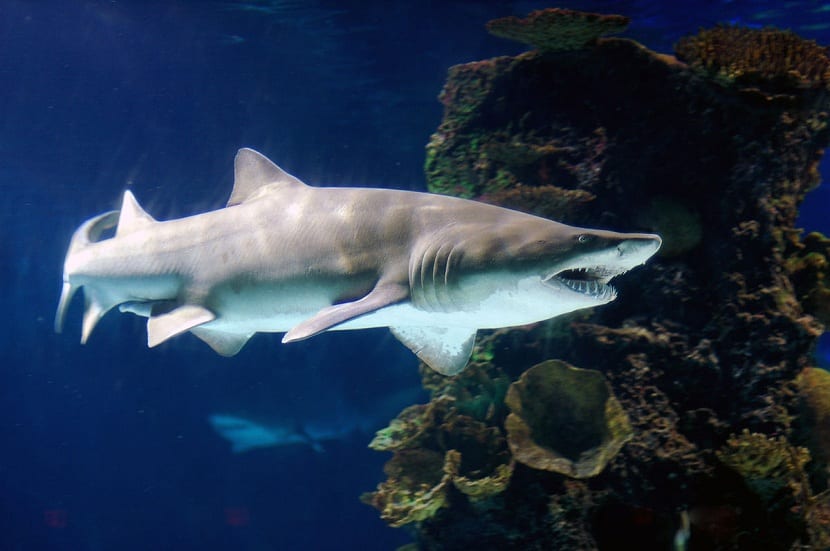
The bull shark can be found in the Amazon River in South America, the Zambezi (which is why it is also called the Zambezi shark) and the Limpopo in Africa, in Lake Cocibolca in Nicaragua and the Ganges in India.
Regarding their habitat, these animals love to move around areas where they are close to beaches or coasts. In this way, they can find a greater number of prey to feed on. These sharks are found in all coastal areas around the world, not only in South America, but also in the Pacific, Atlantic and Indian Oceans.
They are animals that, in general, tend to stay in the same habitat from birth to death. However, it may be the case that they migrate over long distances. Specimens have been sighted in areas of rivers and lagoons where, to have arrived, they have had to travel 3000 kilometers upriver.
Bull shark feeding
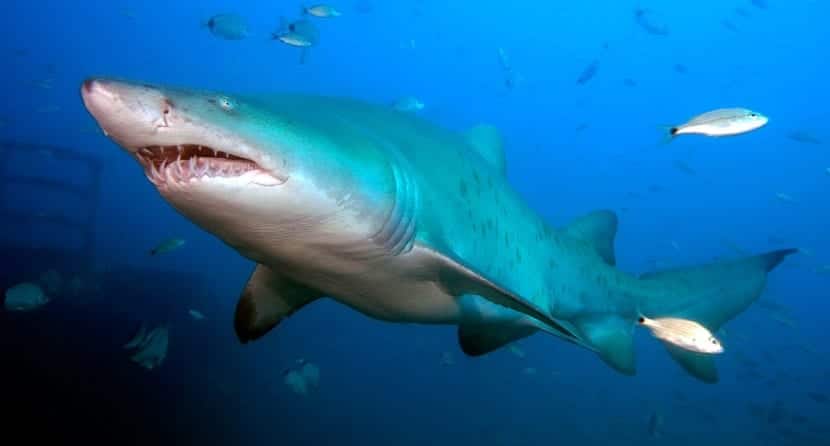
The bull shark feeds on all kinds of animals. Such is their breadth in the diet that they are capable of eating other sharks. Su diet is completely carnivorous. They are dangerous for humans, since the area where they hunt is very close to the bathing areas.
The ability they have to enter fresh water after coming from salt is through a special gland in the kidney. This gland allows them to contain the salt water in their body and expel the fresh water. This for other species of sharks would be deadly. Fresh water causes the cells of a shark that lives in marine waters to explode and lead to death. Thanks to this gland, the bull shark can get closer to the areas of humans.
Reproduction and offspring
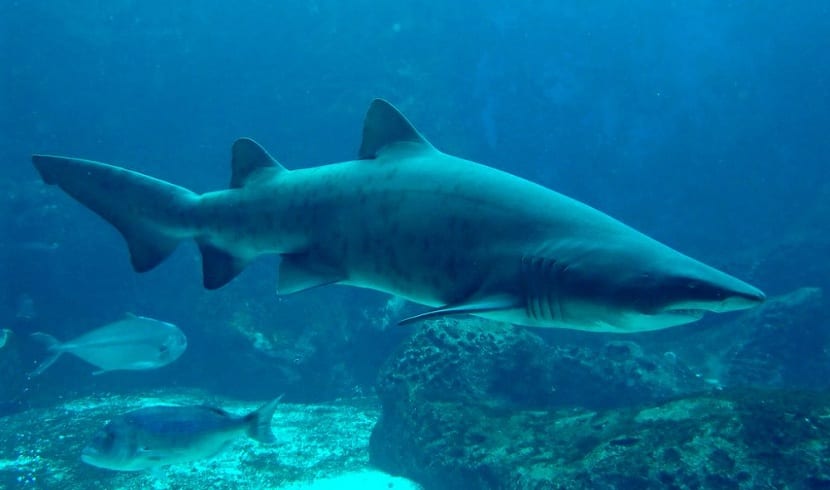
This shark is known to be one of the animals with the highest level of testosterone in mating season. You can have more of this hormone than a male African elephant. During the mating season it increases even more, which makes it an extremely territorial animal.
The reproduction of the bull shark is exactly the same as most of the rest of the mammals. However, it has a trait that is quite distinguished from those of the other species. It is that females have two uteri. This is known as intrauterine cannibalism.
The small embryos that are developing inside them have the ability to feed on their own siblings if the situation is lacking in nutrients. The gestation of the young usually lasts between 8 and 10 months. This time is necessary for the offspring to be well developed and to be able to fend for themselves once they leave the mother.
Females only have the ability to give birth to young in periods of two years and only two at a time. Therefore, it is considered a species with slow reproduction.
Threat category
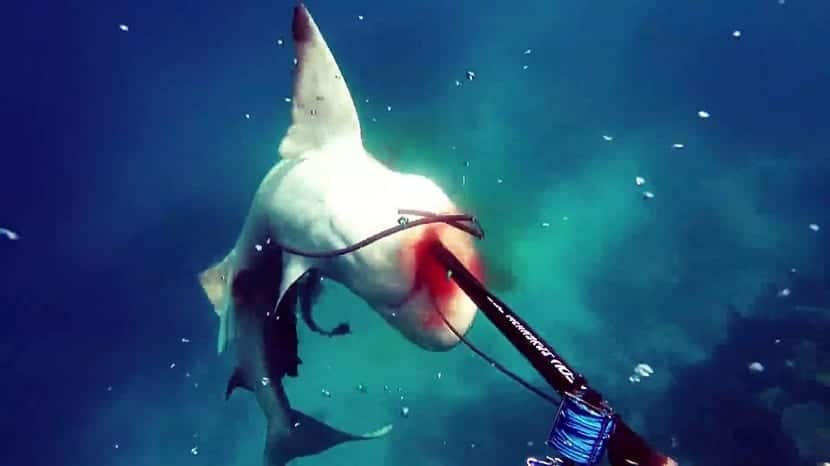
This species is not listed as endangered by the International Union for Conservation of Nature (IUCN). When they are in areas close to humans are more vulnerable to fishing and environmental changes that are associated with habitat modification. Dam construction, agriculture and industry can be major vectors of impacts on the species. The modification of the natural habitat may be a reason for these sharks to be classified as Endangered.
Traditionally, bull sharks are fished commercially for their skin, meat and liver oil, although today, the IUCN notes, their fins are the main product driving demand for this and many other species.
With this information you will be able to learn more about these sharks considered most dangerous for humans.
R. Well, if you are going to talk about the bull shark, why are the first two images of the Galeocerdo cuvieri and the Carcharhinus plumbeus?
I do not know if you know that the photo you have used is the same that is published in http://www.hablemosdepeces.com
Perhaps it is one of those free photos or they have copied it or you have taken it from him. It is also coincidence that both of you have erred in mistaking him for the tiger.
It has two large dorsal fins
A. It does not have large dorsal fins, sailfish do.
Its color is gray all over the body, except for the upper part which is white.
A. Not true, the bottom is white
It is considered among the largest shark species.
A. It is not true, they have a normal size among sharks.
Although people believe that the white shark is the most dangerous animal in the oceans, it is not correct. The bull shark can become more prone to attack humans.
A. Wrong, all species over a meter in length can attack a man and cause horrific injuries. However, only a few large sharks truly deserve the name of man-eaters. In about thirty species it has been determined exactly that they attack man, but only nine of them regularly devour him. The large shark that can measure 11,3 m. in length, the shortfin mako that shows a curious predilection for canoes and other small boats that it attacks, the tiger shark is considered the most dangerous anthropophagous after the whitefish. The hammerhead shark and the blue shark attack without provocation and also devour the man.
It usually shows great aggressive activity and attacking behavior.
R. Germán, when saying: great aggressive activity, there is plenty of attacking behavior, since they are synonymous words.
These sharks are found in all coastal areas around the world.
A. Wrong, in the Arctic and Antarctic oceans they don't poke their noses.
The bull shark feeds on all kinds of animals
A. Incorrect, it has not been shown to feed on coelenterates, echinoderms, plankton, krill and many other animals.
Fresh water causes the cells of a shark that lives in marine waters to explode and lead to death.
R. Error, in the other fish they die due to the destruction of the red blood cells due to the osmosis caused by the fresh water against the salt water.
The gestation of the young usually lasts between 8 and 10 months.